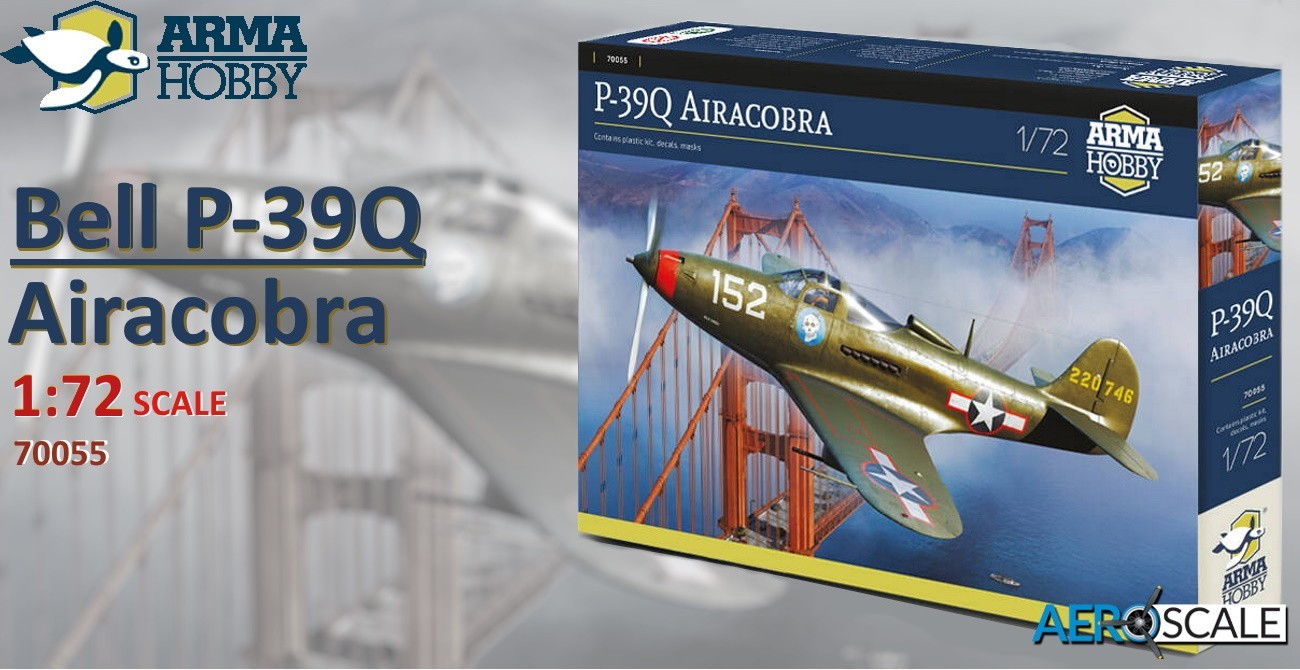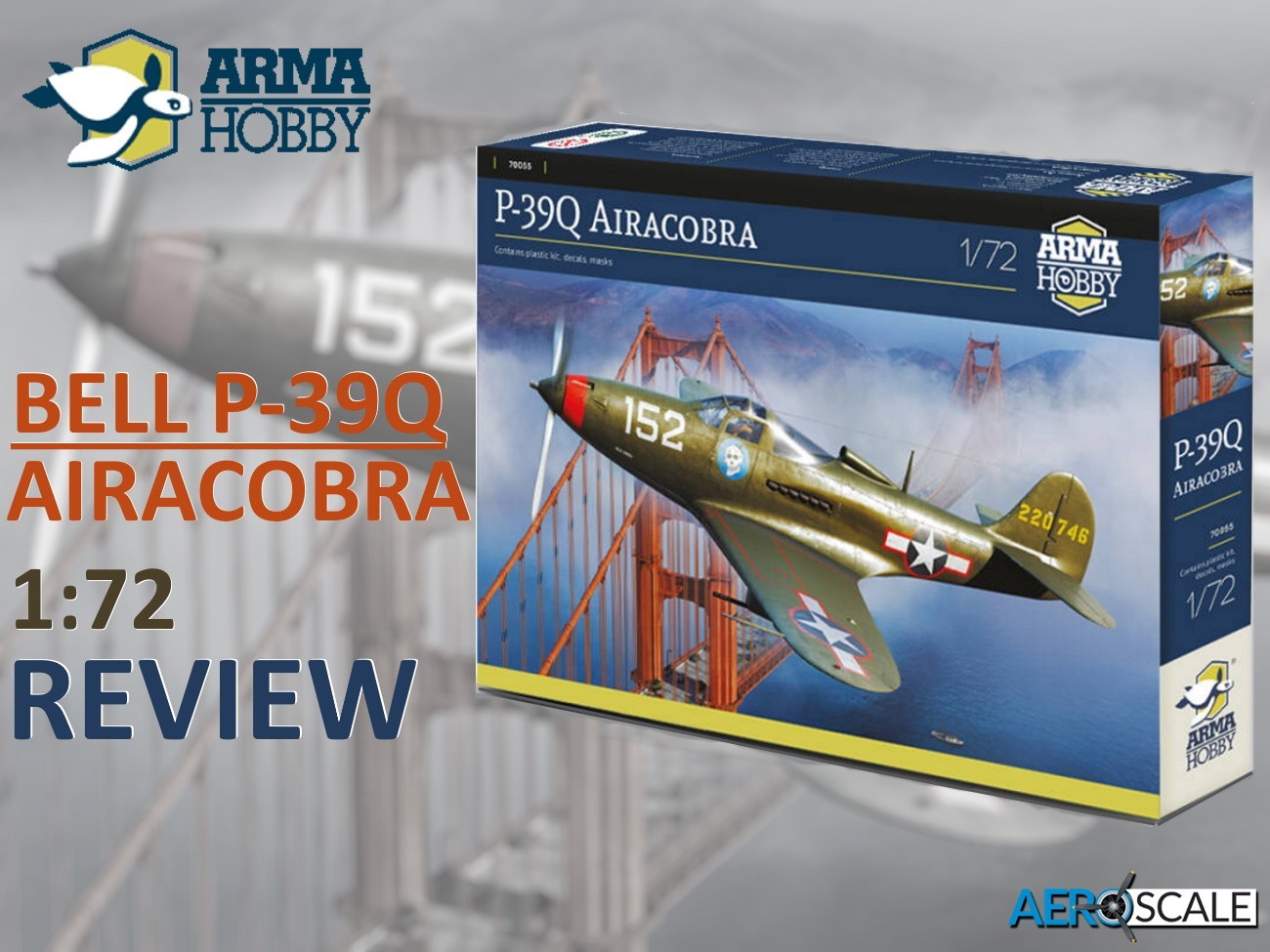
Background
The Airacobra was Bell’s answer to the US Army Air Corps [USAAC] Circular proposal X-609 for a fighter capable of intercepting high altitude hostile aircraft. Bell’s chief engineer set about designing the aircraft around the 37mm Oldsmobile T9 [later M4] canon. As the calibre of the canon was much greater than the standard 20mm canon, it was impossible to accommodate the engine in the forward fuselage. As a result, the engine was placed in the centre of the fuselage behind the pilot with the turbo charger placed in the belly. The air intake for the super charger was placed on the side of the fuselage similar to the intakes on the tail boom of the P-38. A ten-foot-long prop shaft connected the Allison V-1710 liquid-cooled V-12 engine to the propeller. The resultant XP-39 was submitted to the National Advisory Committee for Aeronautics [NACA] for tests. Unfortunately, it was found that there was high amount of drag resulting from the engine installation, oil cooler and intercooler scoops as well as the turbocharger.
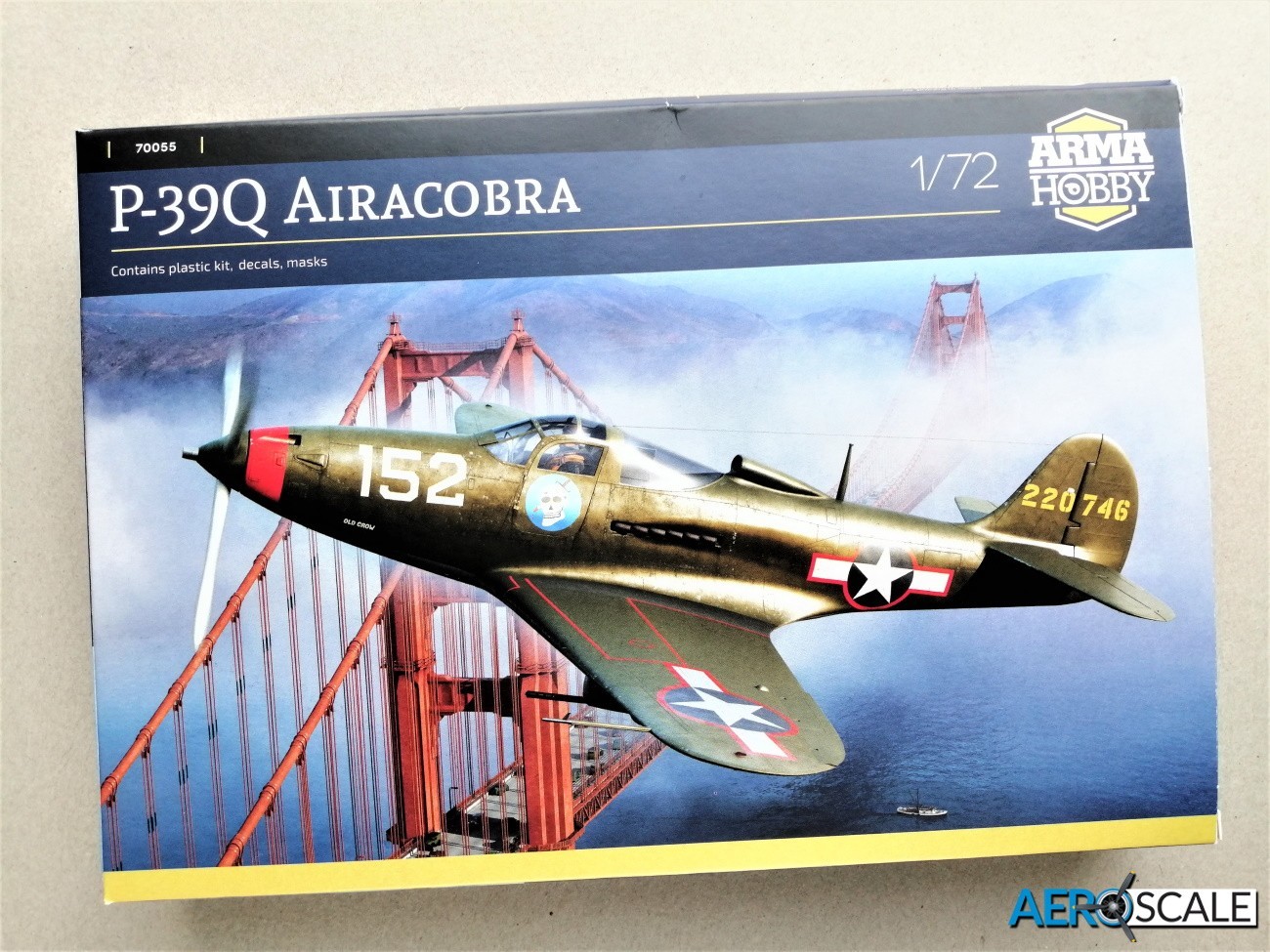
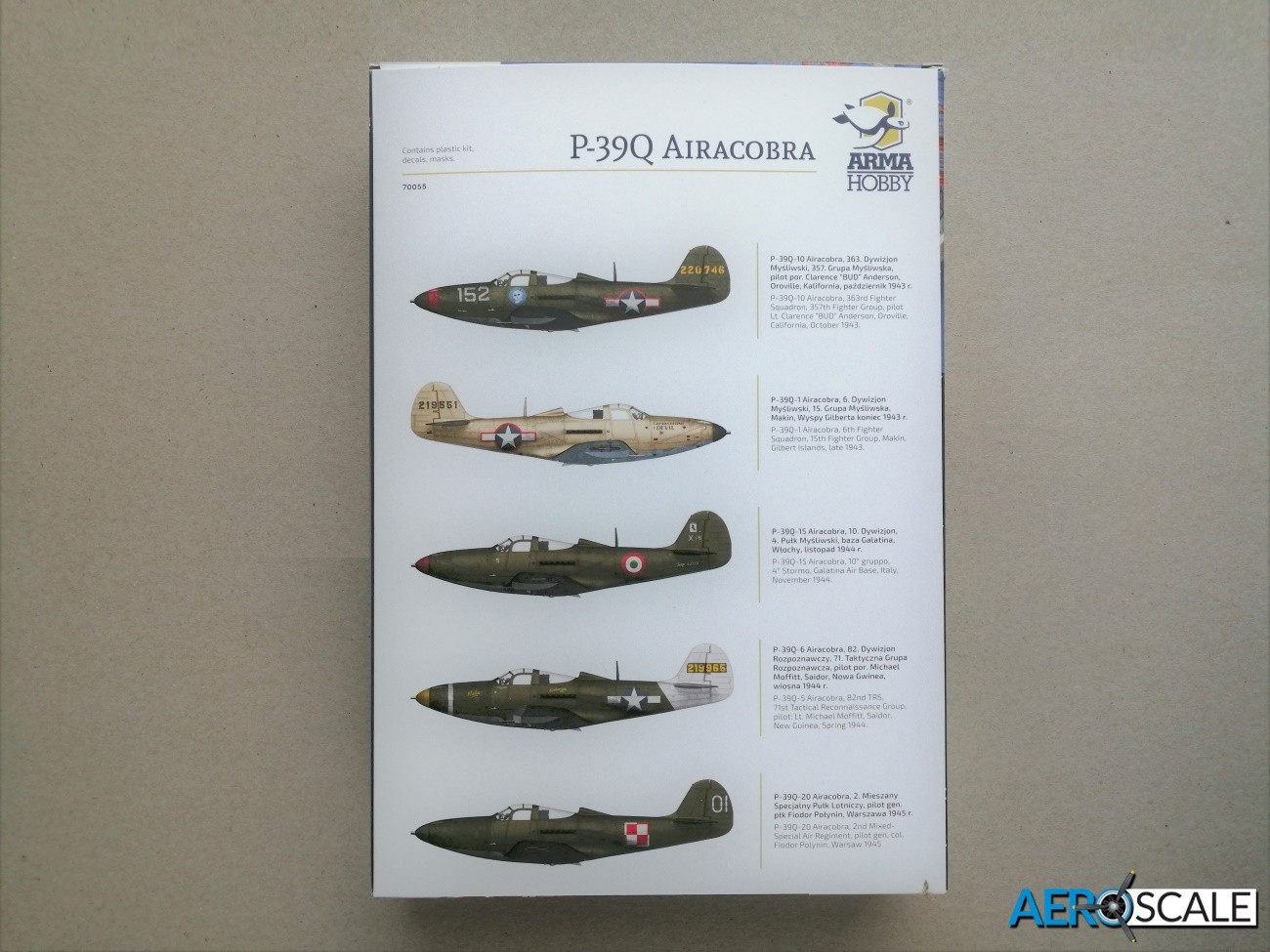
Changes were made from the recommendations of NACA including the deleting of the turbocharger. Its removal had a noticeable negative effect regarding high altitude performance. The glycol-cooled radiator was fitted in the wing centre section, immediately beneath the engine; it was flanked by the drum-shaped oil coolers. Air for the radiator and oil coolers was drawn in through intakes in wing leading edges and was directed via four ducts to the radiator faces. The air was then exhausted through three controllable hinged flaps in the fuselage centre section. Air for the carburettor was drawn in through a raised oval intake immediately aft of the rear canopy. Despite the change in aerodynamics the P-39 never attended speeds beyond 400mph. The lack of free space in the fuselage meant internal fuel storage was limited to the wing. As a result, range was disappointing and the P-39 generally flew on missions with external fuel tanks. Despite its limitations the P-39 saw service throughout WWII with the USAAF, Soviet AF, Free French, the RAF, and the Italian Co-Belligerent AF.
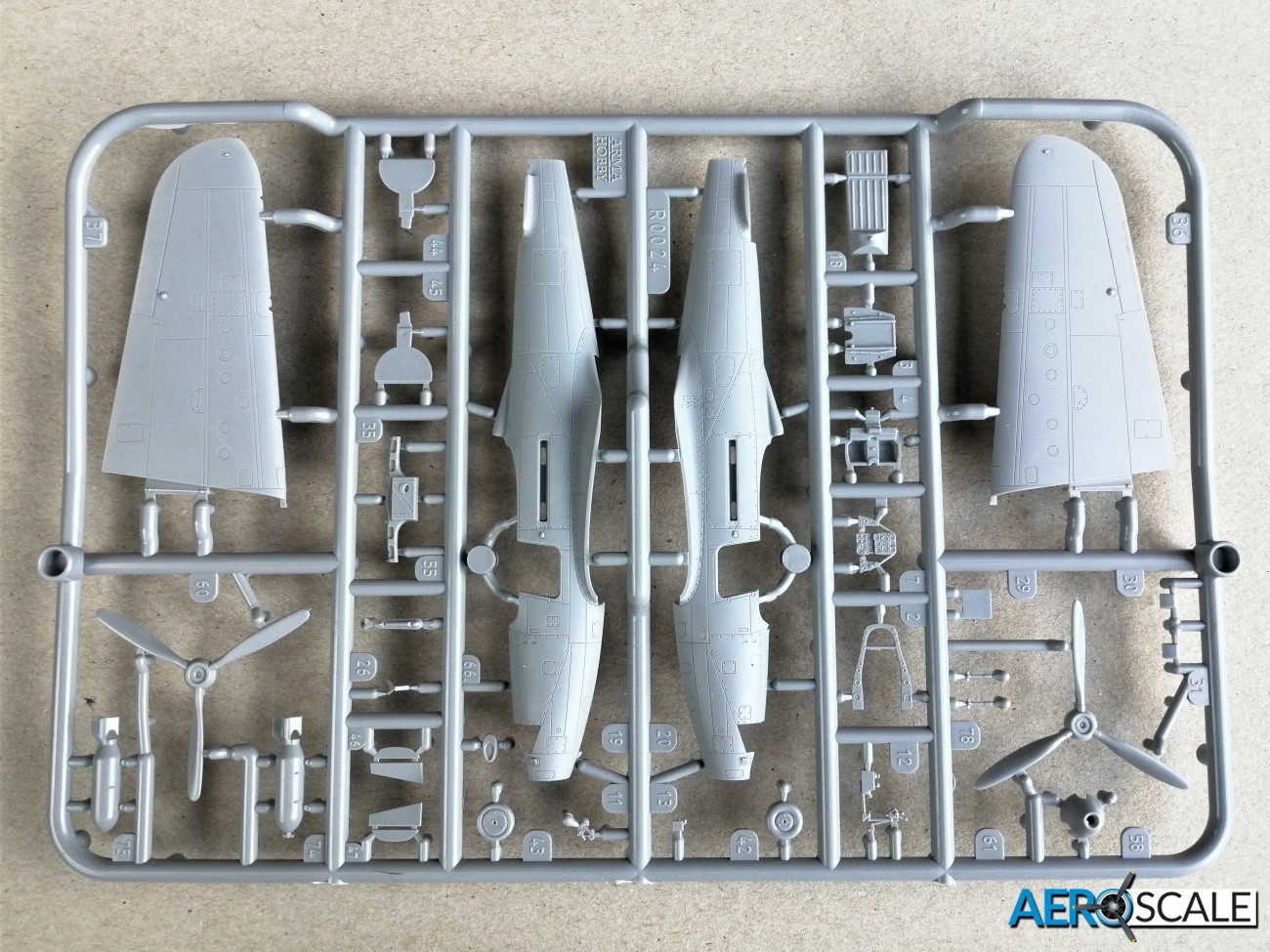
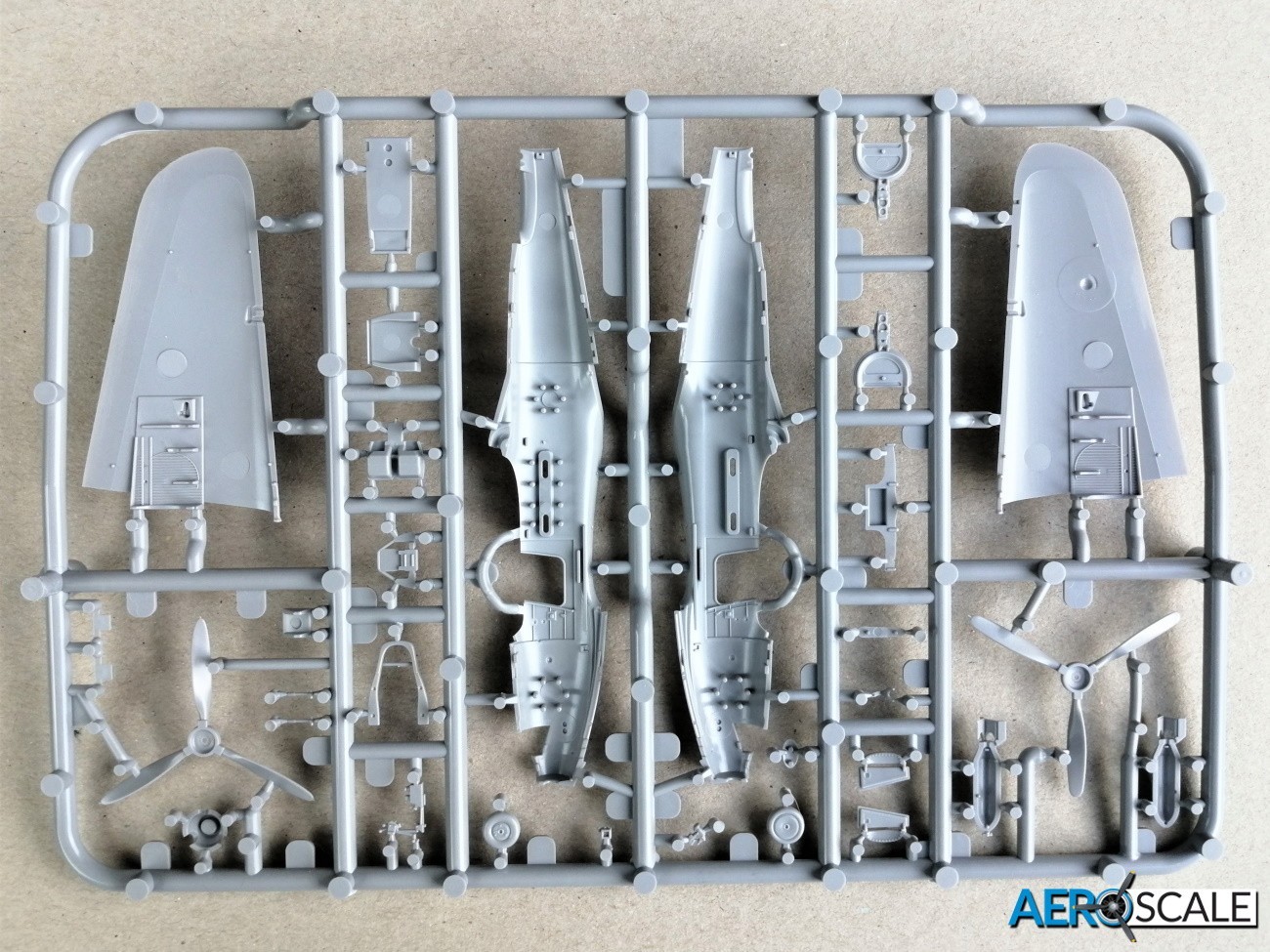
The Kit
The P-39Q as is represented with this edition, is the final production version of the Airacobra. Production ceased in August 1944. There were quite a few subvariants during production including photo reconnaissance aircraft. The marking options with this kit include the P-39Q-1/-6/-10/-20
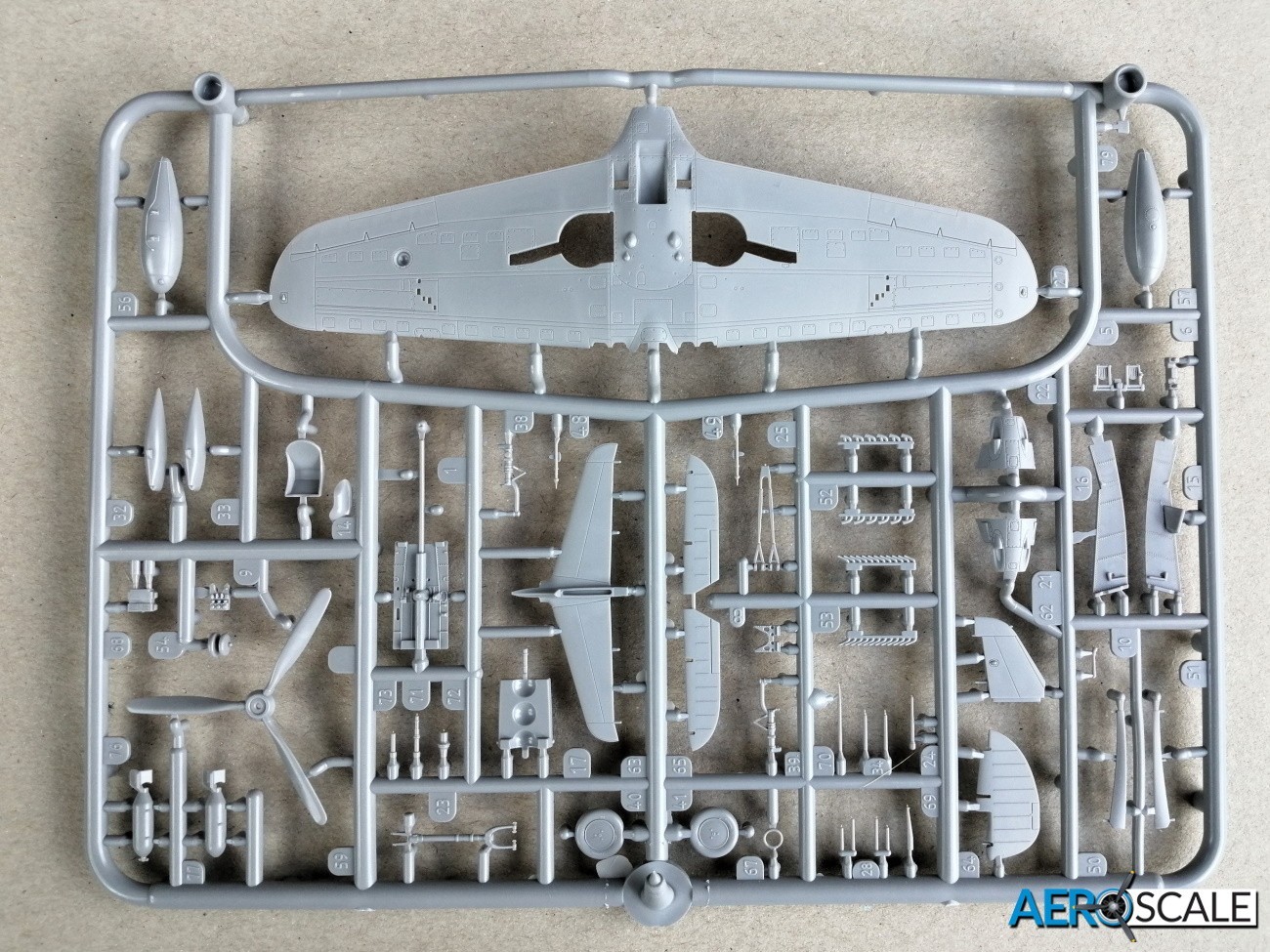

Arma Hobby’s 1:72 scale P-39Q comes in a side opening box and contains:
- 2 x grey plastic sprues
- 1 x clear plastic sprue
- 3 x steel ball bearings [nose weight]
- 1 x sheet of decals
- 2 x sheets of kabuki paint masks
- Instruction manual

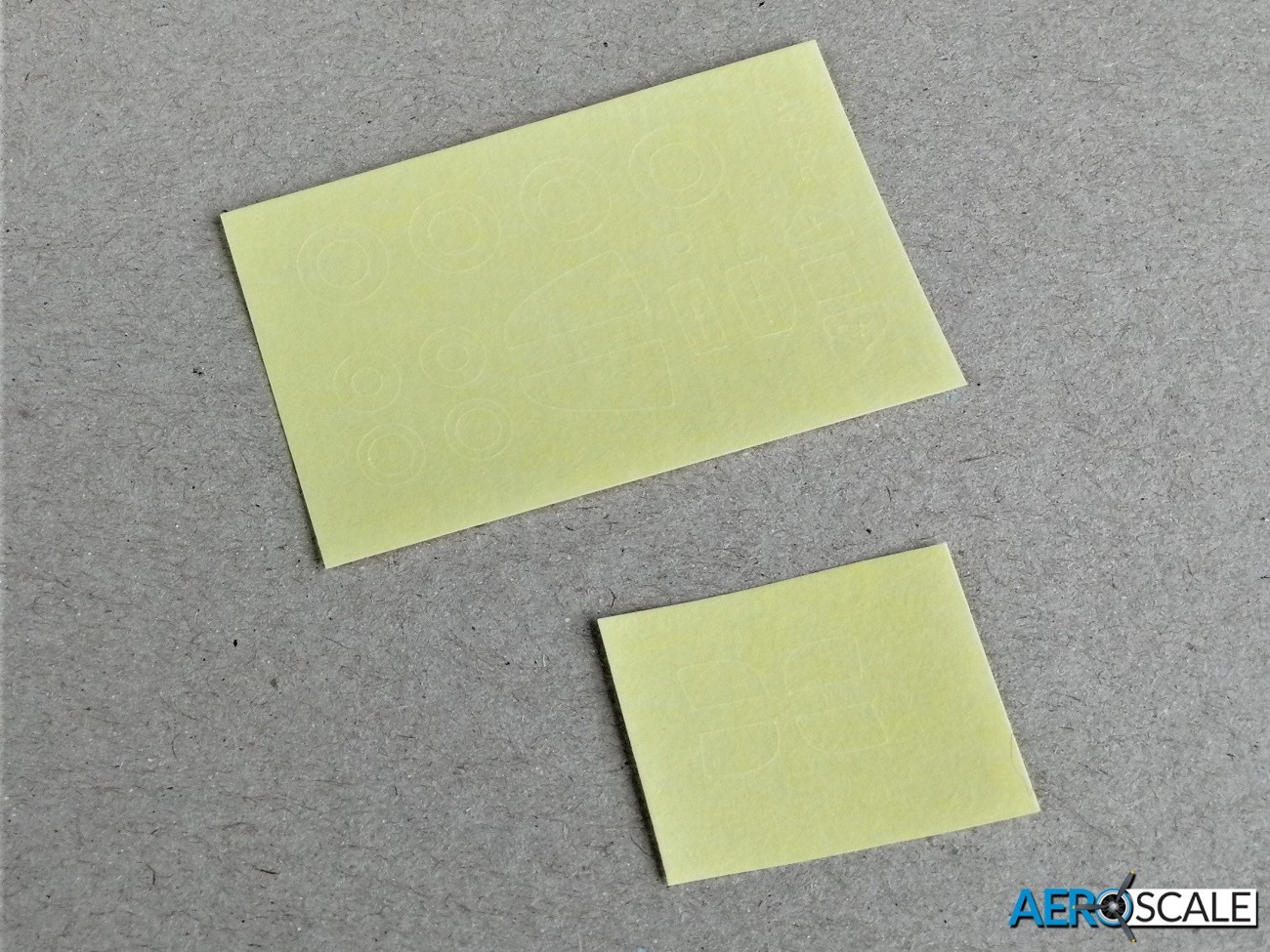
Everything is packed into a single bag for security with the clear plastic sprue and ball bearings packed within their own bags. The decals and masks are placed inside the instructions. The surface of the grey plastic parts is matt in nature. The recessed detail is first rate and will take a wash if you want to highlight the panel lines and fasteners. There are locating pins and holes to help with alignment of the main parts. Parts are beautifully moulded and in scale, though some of the parts look very delicate. So, some care will be need removing them from the sprues.
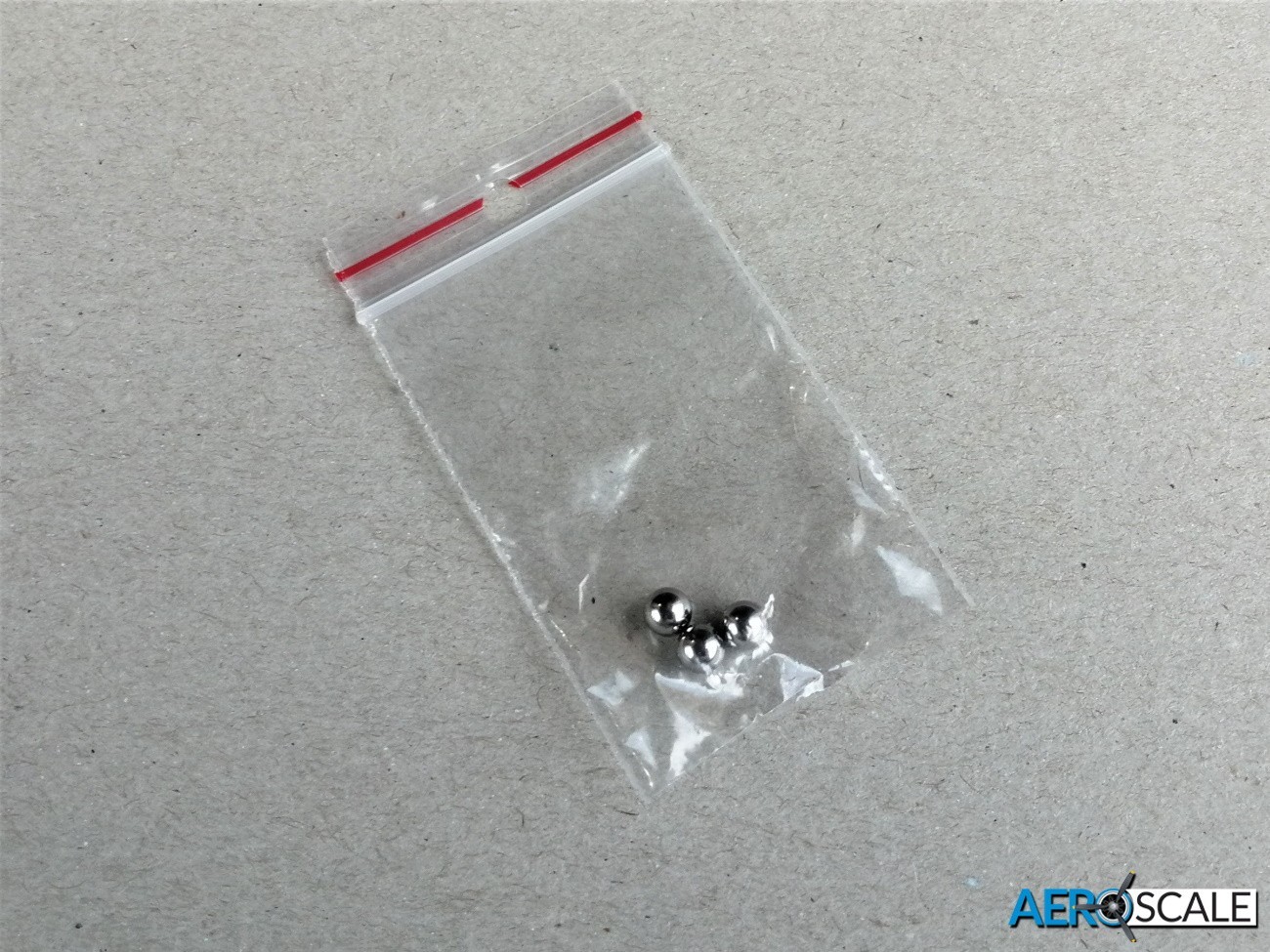
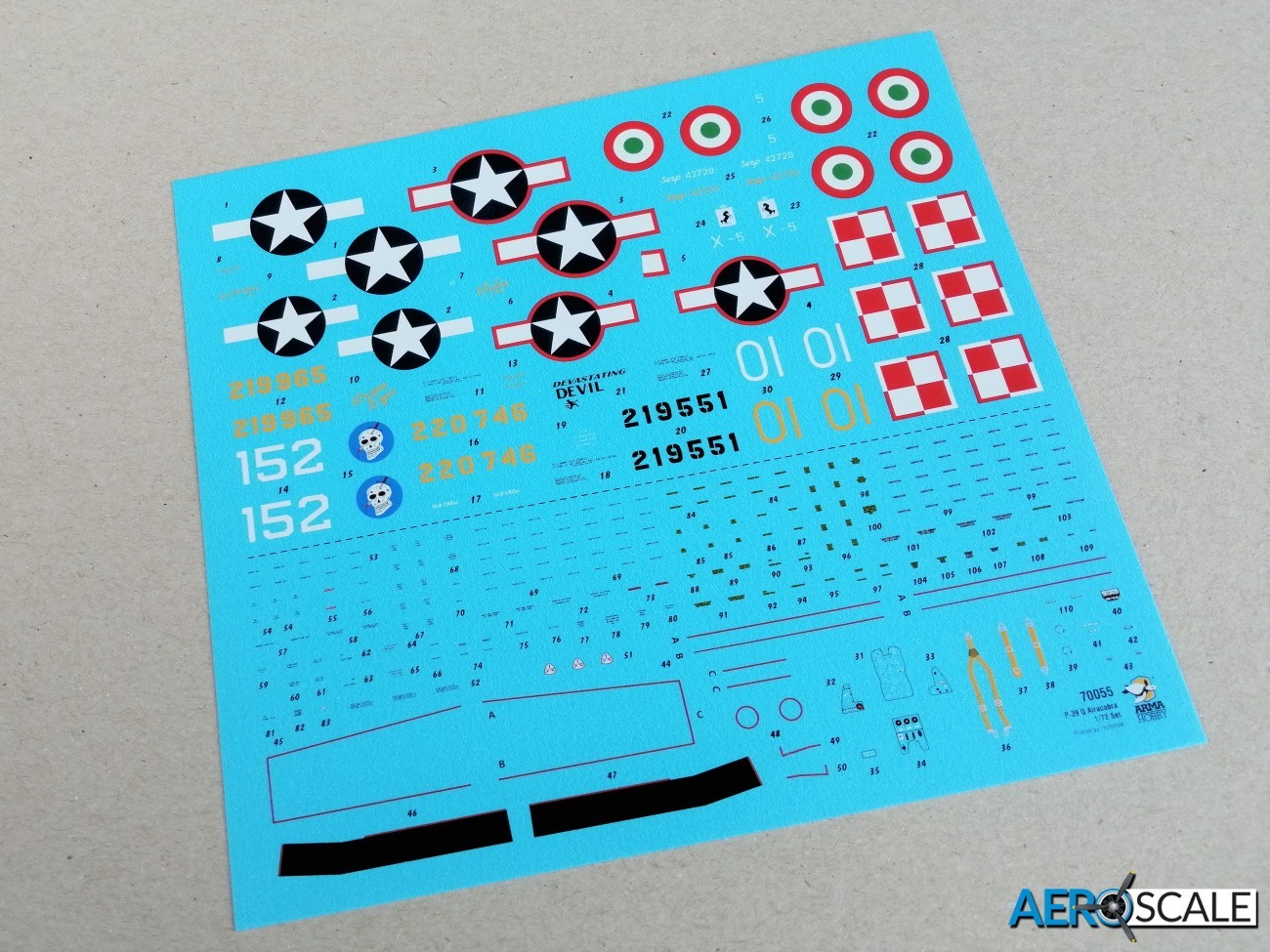
The cockpit has thirteen plastic parts making up for a detailed office. The inside surfaces of the fuselage have fine raised detail in the cockpit area. The instrument panel [IP] and central console has sharp detail and the instrument faces can be found on the decal sheet. The prop shaft is incorporated with the cockpit floor. Part of the cockpit floor forms a section of the roof of the forward undercarriage bay. The seat is attached to a nicely detailed frame. The seat harnesses are to be found on the decal sheet. The decking to the rear of the pilot and covering the engine is nicely detailed. Arma Hobby advise drilling a couple of holes into the deck to fit the radio.
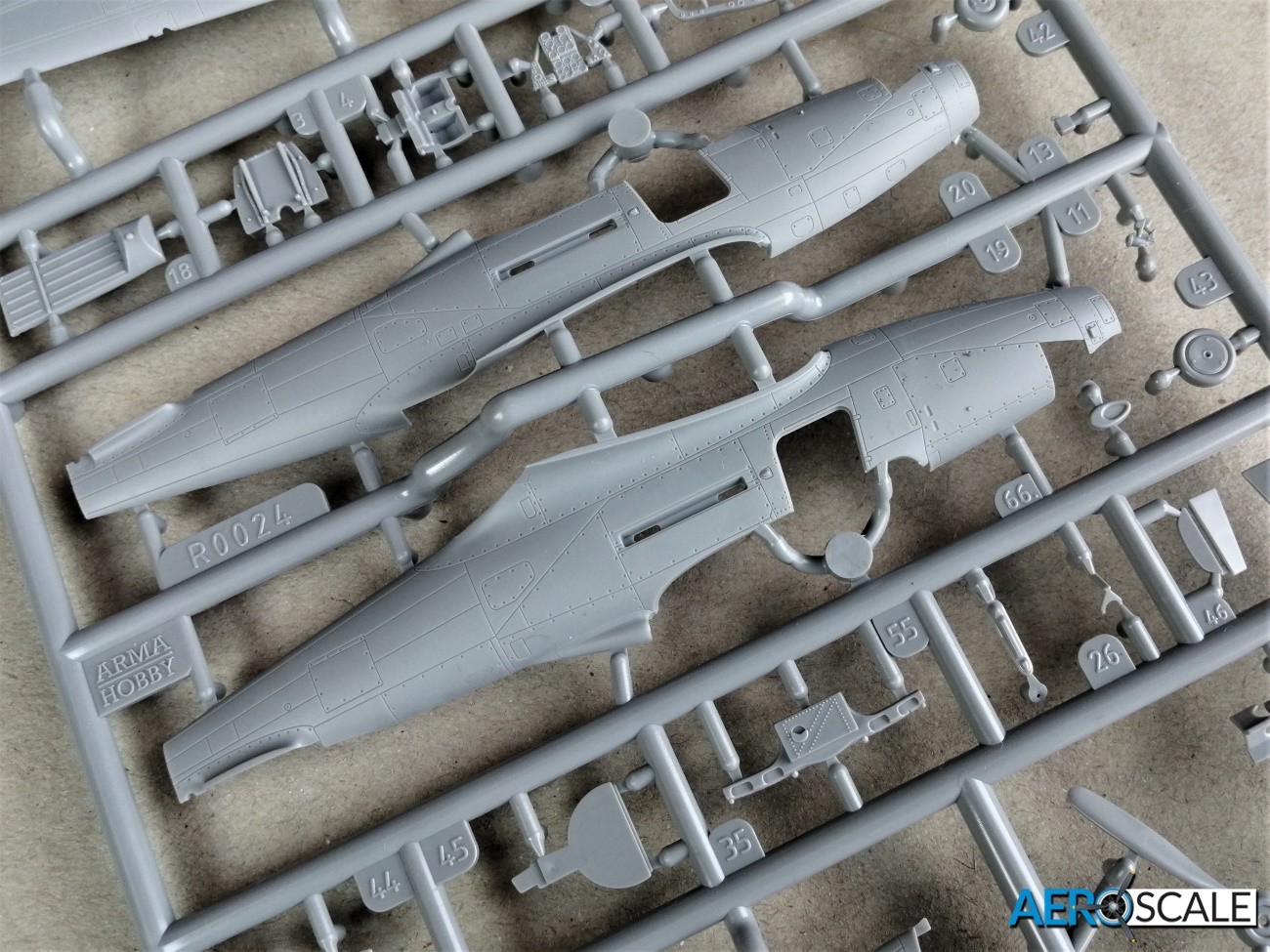
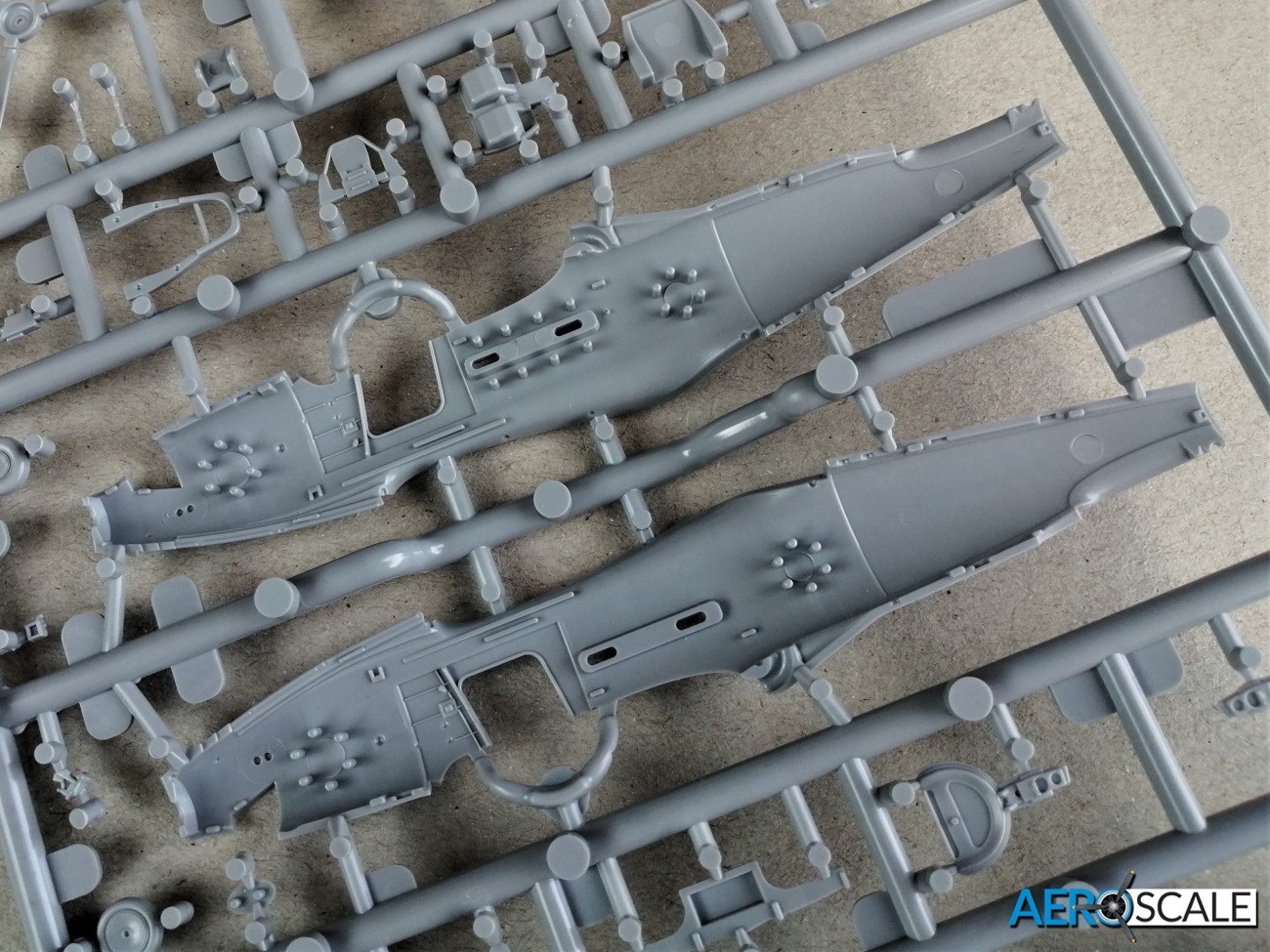
The canopy and windscreen are one piece with separate car style doors. The doors can be displayed open.
The fuselage is split vertically with separate vertical fin and separate rudder as well as alternate pieces for the nose armament. A thoughtful inclusion is the three ball bearing counter balances to prevent tail sitting of the model on its undercarriage. Included is a small plastic part that the weights fit into. There are two different styles of exhaust Included though one is only used. The one-piece prop has a separate spinner and into the spinner goes one of two separate canon barrels. Arma Hobby point out that the recessed outline of an engine bay access panel on the right side needs filing.
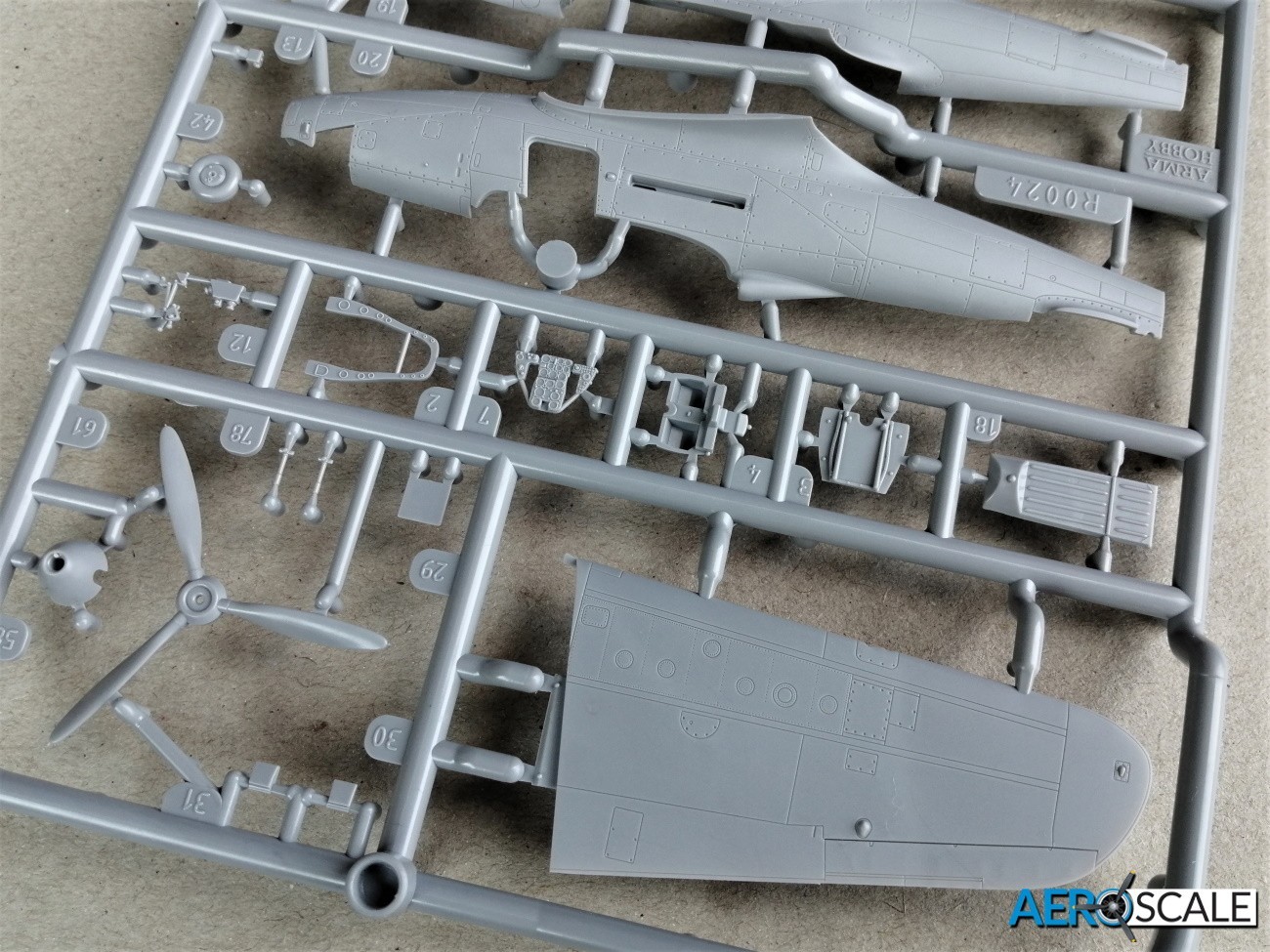
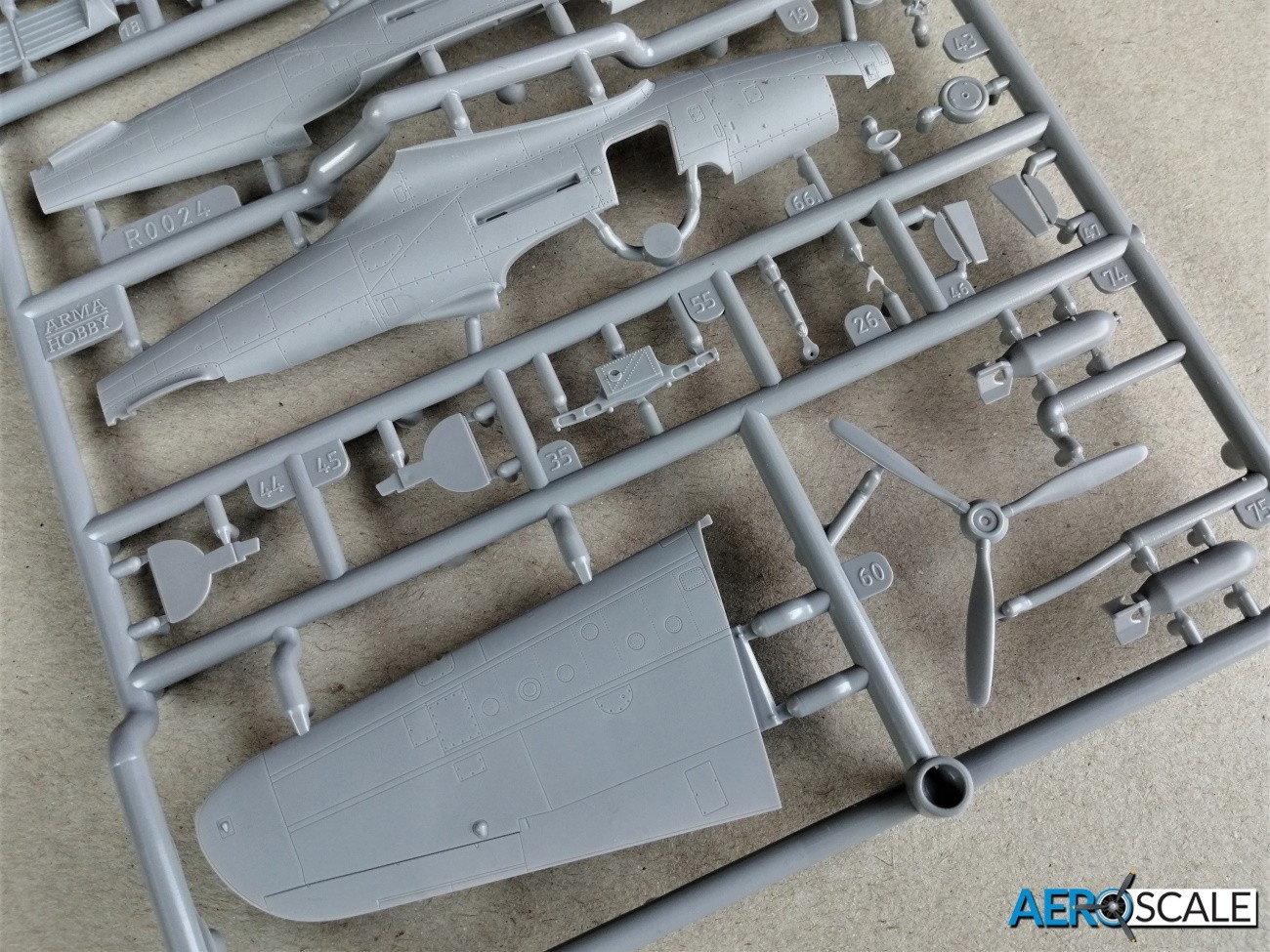
The main wings are made up from three pieces, with the lower wing being one-piece. The control surfaces and flaps are moulded in the neutral position. The gap between aileron and wing is correctly wider and deeper than the panel lines. The three vent flaps under the belly for the coolant and oil radiators are separate and presumably can be displayed open or closed. The detail moulded into the roof of the undercarriage bay is well done. There is no sign of shrinkage visible on the upper half of the wing caused by the detail. The lower wing needs holes drilling to fit the belly tank/bomb. The underwing 0.50 cal guns gondolas are fitted to options 1-4 and will need holes drilling in the wing to fit them. Some of the detail on the wing does need changing. Options 1-4 requires the ID lights under the wing tips to be filled. Also the holes in the leading edge for the outer machine guns need to be filled as they were not fitted on the ‘Q’ version.

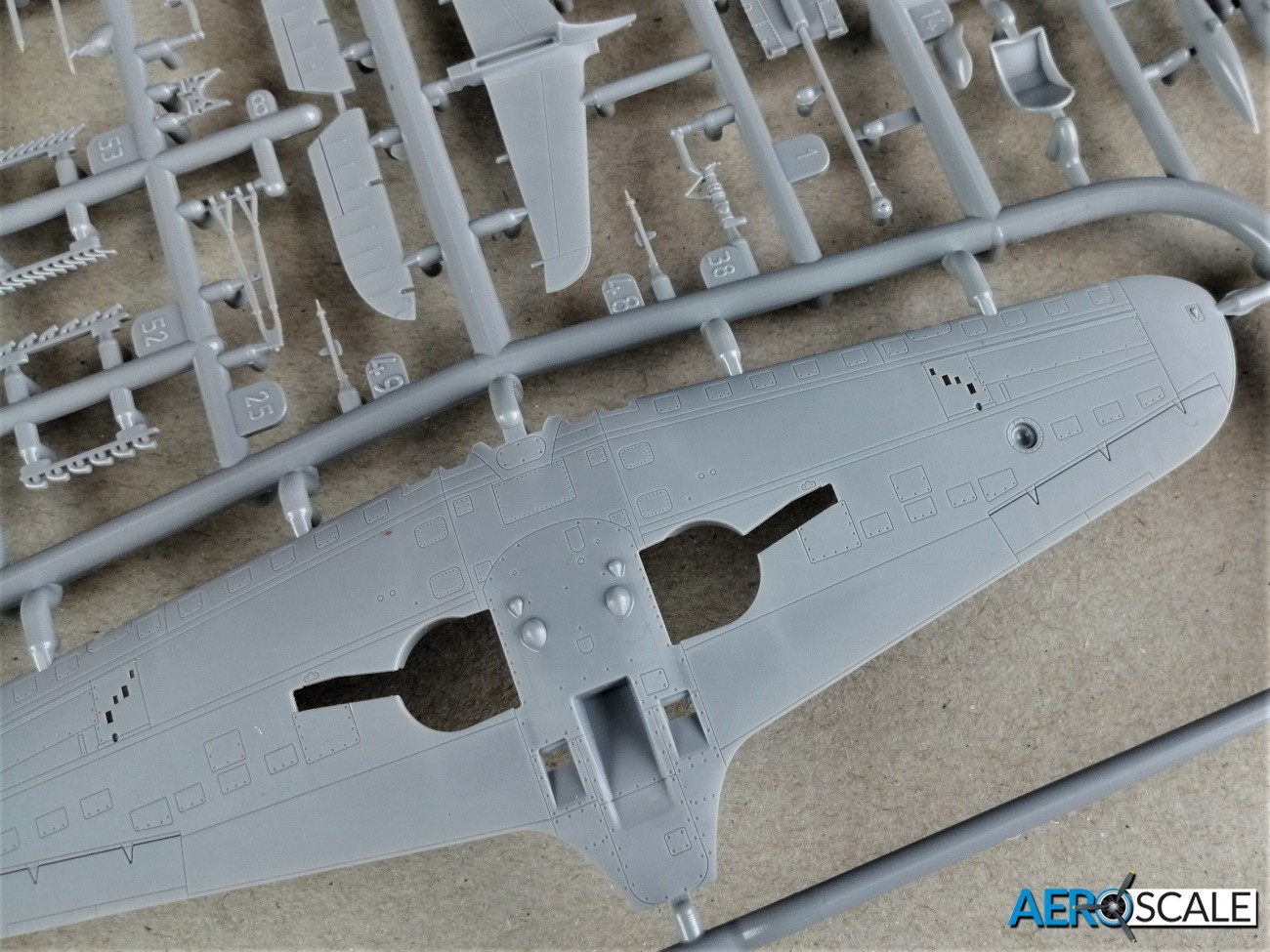
The detail on the parts making up the undercarriage is superb. Particularly noteworthy is the detail in the wing, on the inside of the undercarriage doors and the separate walls of the forward undercarriage bay. The latter are attached to the cockpit floor. The oleos of the main undercarriage display enough compression so that the sit of the model along with the weighted one-piece wheels should look good. The tyre manufacturer Firestone features on the sidewall in low relief. Both forward and main undercarriage units can be left off until painting is completed.
Included are a 250lb and 500lb bombs as well as the almost permanently fitted fuel tank. These are fitted in the belly position.
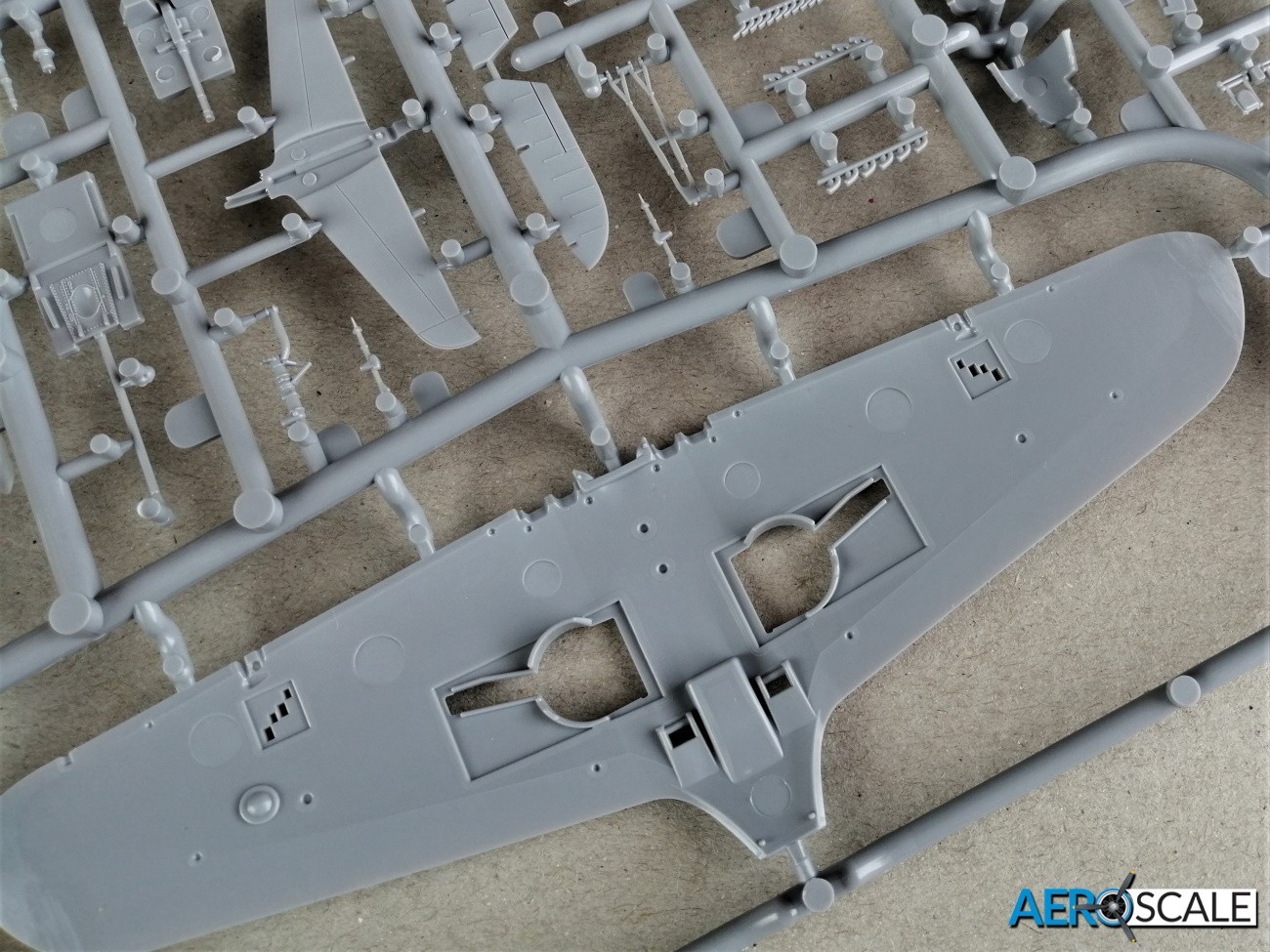

The kabuki paint masks are for the windscreen, canopy, both sides of the doors, wheels and I think the landing light. Oddly Arma Hobby don’t provide any guidance for positioning the masks.
The decals are produced by Techmod and includes the various insignia and markings, seat harness, cockpit instruments, placards, art work and wing walkways. Do not be intimidated by the number of stencils on the sheet. There are two lots with one specifically for option 2. The definition, registration and colour density of the decals is top class. The glossy carrier film is kept to a minimum.
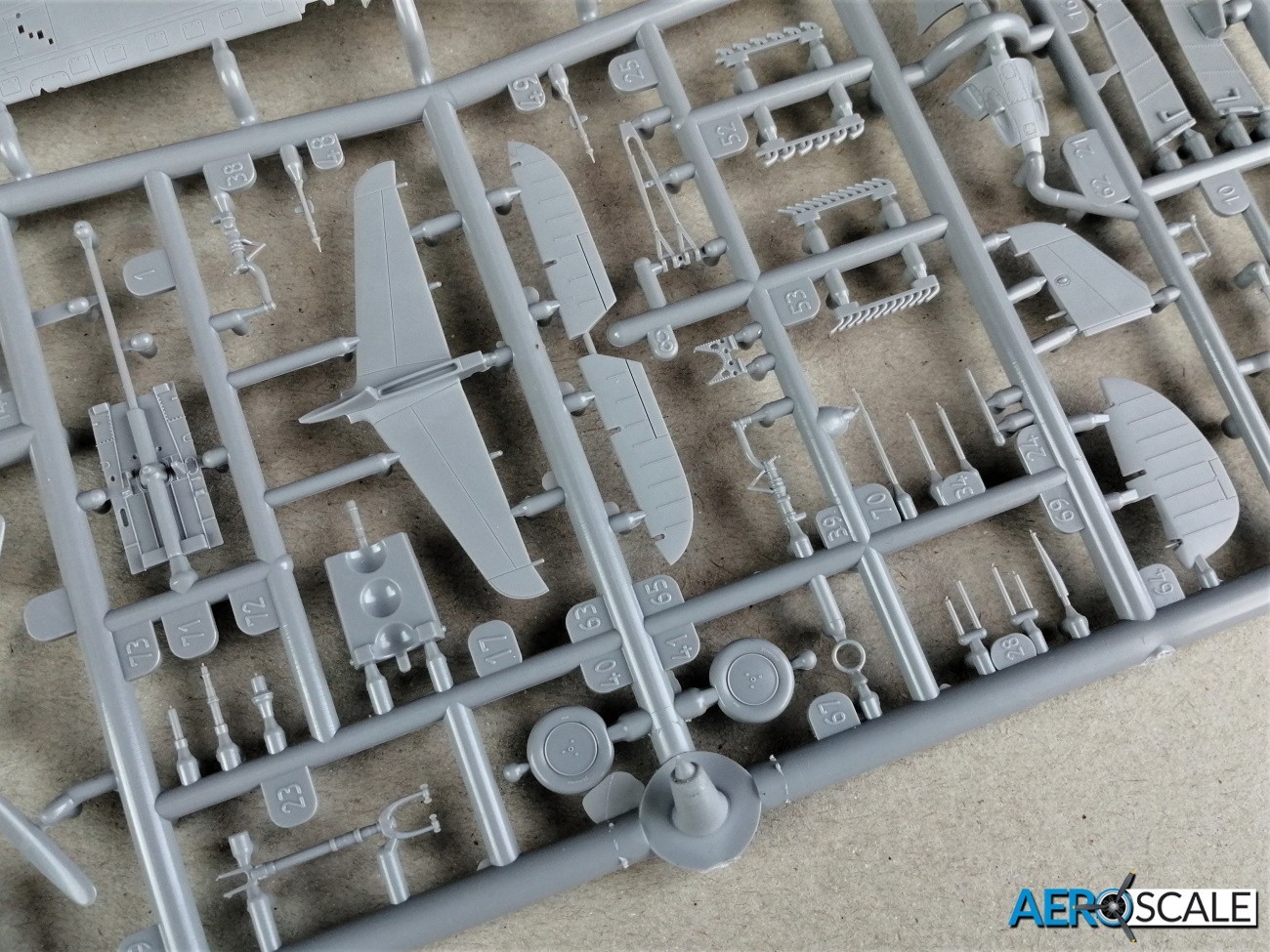
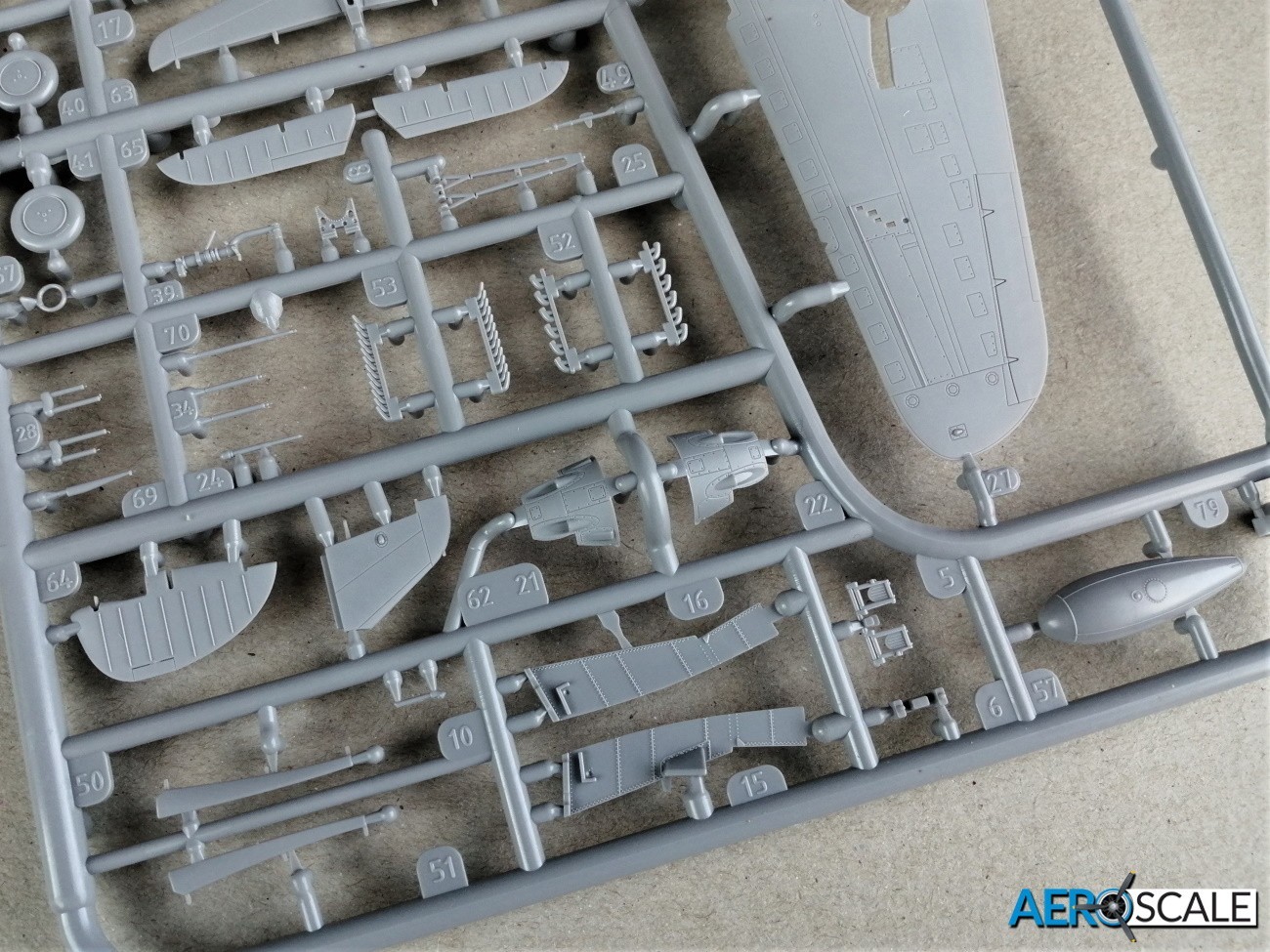
The twelve-page A5 format instructions seems pretty clear. Construction instructions are colour coded and a useful aid in construction are the multiple view diagrams. The painting guide is in colour with four profile views of each subject. The stencil guide also has four profile view of the airframe too. There are several paint manufactures referenced in the instructions including: Hataka, AK RC, Lifecolor, Ammo, Humbrol, Vallejo and Tamiya.

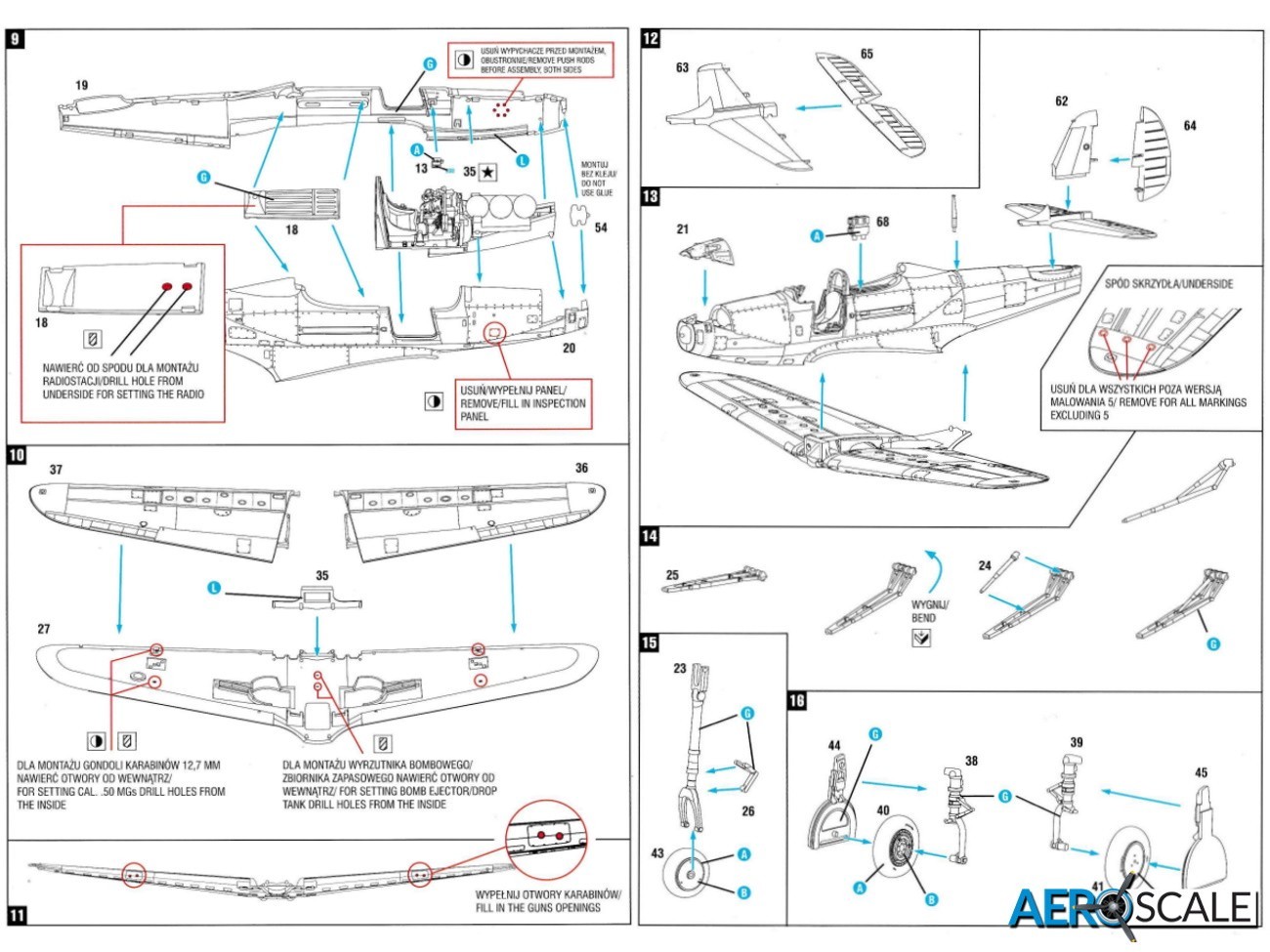
Markings options include:
- P-39Q-10 Airacobra, 363rd Fighter Squadron, 357th Fighter Group, pilot Lt. Clarence “BUD” Anderson, Oroville, California, October 1943.
- P-39Q-1 Airacobra, 6th Fighter Squadron, 15th Fighter Group, Makin, Gilbert Islands, late 1943.
- P-39Q-15 Airacobra, 10° gruppo, 4° Stormo, Italian Co-Beligerent Air Force, Galatina Air Base, Italy, November 1944.
- P-39Q-6 Airacobra, 82nd TRS, 71st Tactical Reconnaissance Group, pilot: Lt. Michael Moffitt, Saidor, New Guinea, Spring 1944.
- P-39Q-20 Airacobra, 2nd Mixed-Special Air Regiment, Polish “people’s” Aviation, pilot gen. col. Fiodor Polynin, Warsaw 1945.
Camouflage is predominantly olive drab and light grey though Arma Hobby’s selection of marking options is far from boring. Option 2 has sand and light blue finish. Option 4 looks interesting with the white painted areas that was used in the south west Pacific theater.


Conclusions
This looks like another superb release from Arma Hobby. They have maintained the high standards of detail and quality we are now coming to accept. It looks as if Arma Hobby will be releasing more variations on the P-39 in the future judging by the unused parts left on the sprue [props, nose gun fairing, nose wheels and exhaust]
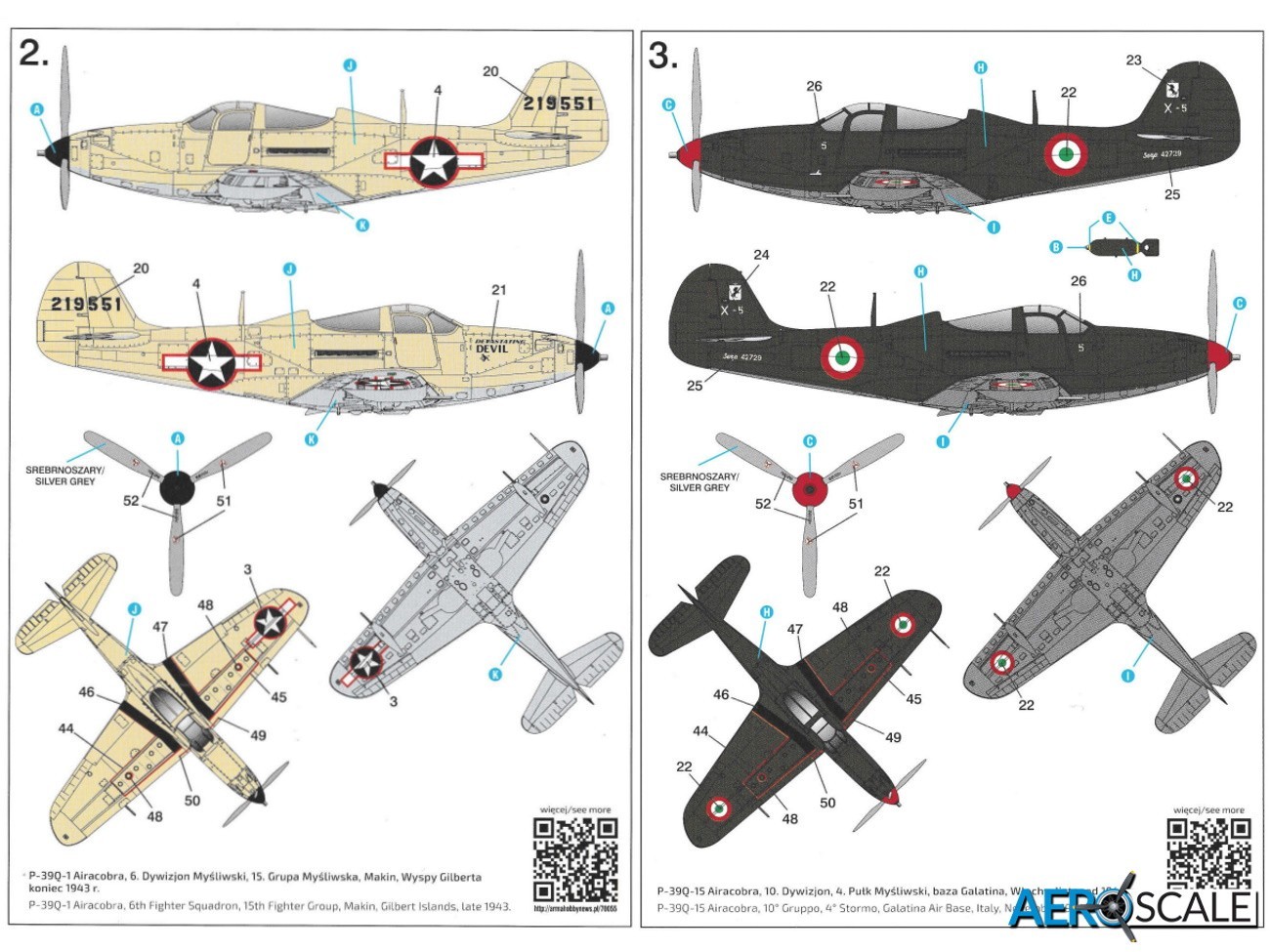

Price: €26.50 from Arma Hobby
Many thanks to Arma Hobby for supplying this kit for review.
70055 – Bell P-39Q Airacobra – 1:72
Please remember, when contacting retailers or manufacturers, to mention that you saw their products highlighted here – on Aeroscale.











